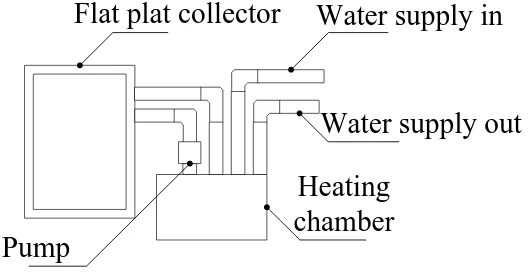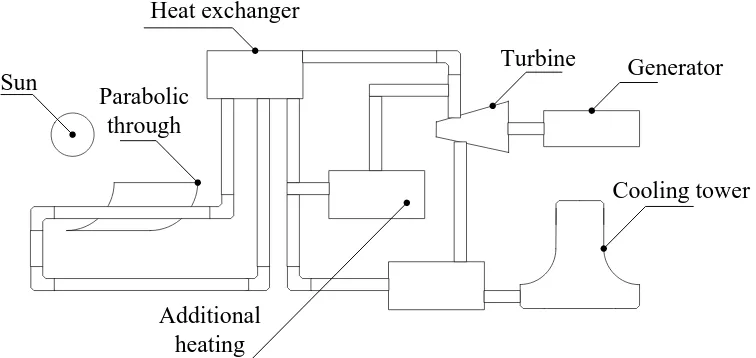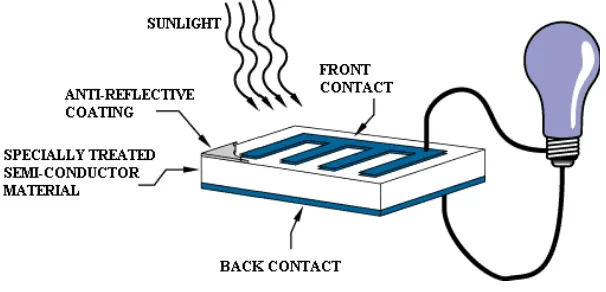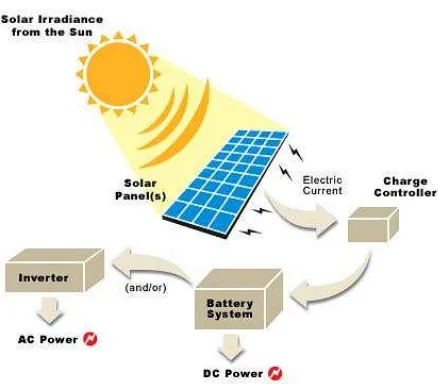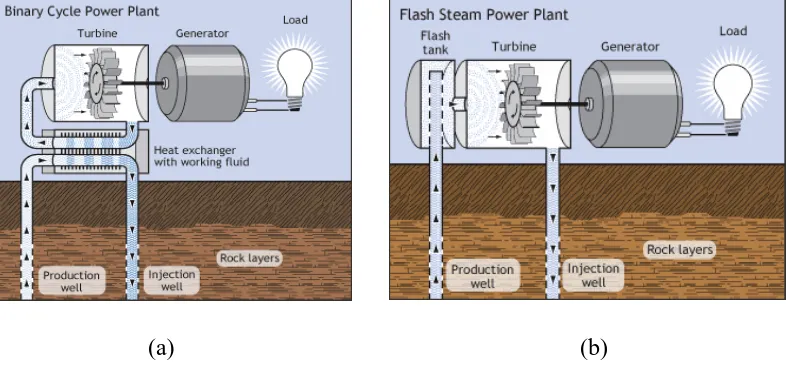ANALYSIS OF OPTIMUM COIL PARAMETER OF PERMANENT MAGNET GENERATOR FOR ENERGY HARVESTING APPLICATION
ABDUL FATAH HILMY BIN HARUN
A report submitted in partial fulfillment of the requirements for the degree of Electrical Engineering in Power Electronic and Drive
Faculty of Electrical Engineering
UNIVERSITI TEKNIKAL MALAYSIA MELAKA
“ I hereby declare that I have read through this report entitle “ANALYSIS OF OPTIMUM COIL PARAMETER OF PERMANENT MAGNET GENERATOR FOR ENERGY HARVESTING APPLICATION” and found that it has comply the partial fulfillment for awarding the degree of Bachelor of Electrical Engineering (Power Electronic and Drive)”
Signature : ...……….
Supervisor‟s name : ….………
I declare that this report entitle “ANALYSIS OF OPTIMUM COIL PARAMETER OF PERMANENT MAGNET GENERATOR FOR ENERGY HARVESTING APPLICATION” is the result of my own research except as cited in the references. The report has not been accepted for any degree and is not concurrently submitted in candidature of any other degree.
Signature : ………
Name : ………
ACKNOWLEDGEMENT
First of all, I am grateful to the Almighty God for His grace, I am able to complete this
Final Year Project.
I would like to send my sincerest gratitude to my project supervisor, Dr. Raja Nor
Firdaus Kashfi bin Raja Othman for his assistance and guidance in completing this Final Year
Project.
I would like to thanks Ms. Norhazilina bt Bahari, Dr. Abdul Rahim bin Abdullah and
Dr. Fazlli bin Patkar for their helpful suggestions and comments in improving my thesis.
A lot of appreciation to my parents, Harun bin Mohd Nor and Juariah bt Suhib, my siblings, A‟bdul Hadi bin Harun, Siti Nurfhadilah bt Harun and Abdul Ahmad Sufi bin Harun for their continuous support and comfort during my downfall in completing this Final Year
Project. Also, a lot of thanks to my friends and others which is directly or indirectly
iii
ABSTRACT
With the increasing demand of electricity all around the globe, the importance of
portable electrical energy supply cannot be taken lightly. As we know, electricity is very
important to us nowadays. Our daily life depends on electric-powered devices. Thus, a
portable energy source seems like the great solution to the problem. This is where this project
becomes handy. In this project, a permanent magnet generator (PMG) is designed for motion
energy harvesting application. The harvesting mechanism was driven by human motion as it
can be wear on and the energy that was produced will be stored into battery. The design
process of the PMG for motion energy harvesting includes several steps. The design focused
only on the optimizing coil parameter of the PMG. Firstly, the PMG are modeled by using
GMSH software and analyzed using Finite Element Method. All data gained from the Finite
Element Method are then analyzed to ensure that the PMG are able to produce the desired
output. After the analysis, it was found out that the PMG is able to produce 50W of output
power with certain setting of the coil parameter. Previously, a lot of energy harvester has been
introduced such as solar panel, tidal harvester and wind harvester. This project is the new
variation of energy harvester which uses the motion energy to generate electricity and it is
hoped to help other researcher or provide useful guide to produce a much better portable
ABSTRAK
Dengan pertambahan permintaan terhadap tenaga elektrik di seluruh dunia, keperluan
terhadap punca tenaga elektrik mudah alih amat dititikberatkan. Seperti yang kita tahu, tenaga
elektrik amat penting dalam kehidupan seharian kita. Kita bergantung kepada perkakasan yang
menggunakan tenaga elektrik. Oleh itu, punca tenaga elektrik mudah alih adalah penyelesaian
terbaik bagi permasalahan ini. Projek ini boleh membantu untuk menyelesaikan permasalahan
ini. Dalam projek ini, penjana magnet kekal (PMK) telah direka untuk kegunaan penuaian
tenaga gerakan. Mekanisma tuaian digerakkan oleh pergerakan manusia kerana peranti
tersebut boleh dipakai dan tenaga yang terhasil akan disimpan didalam bateri. Proses mereka
PMK untuk kegunaan penuaian tenaga gerakan dijalankn melalui beberapa langkah. Pertama
sekali, PMK direka menggunakan perisian GMSH dan dianalisis menggunakan kaedah unsur
terbatas. Kesemua data yang diperoleh dari kaedah unsur terbatas kemudiannya dianalisis
untuk memastikan PMK berupaya menjana hasil yang dikehendaki. Setelah melakukan
analisis, didapati bahawa PMK berupaya menjana 50W kuasa melalui penyesuaian tertentu
terhadap parameter gegelung. Sebelum ini,banyak penuai tenaga telah diperkenalkan seperti
panel solar, penuai air pasang, dan penuai angin. Projek ini adalah variasi penuai tenaga
dimana ia menggunakan tenaga gerakan untuk menjana elektrik and diharapkan supaya projek
ini mampu membantu penyelidik dan memberi bimbingan untuk menghasilkan penuai tenaga
v
TABLE OF CONTENT
CHAPTER TITLE PAGE
ACKNOWLEDGEMENT ii
ABSTRACT iii
ABSTRAK iv
TABLE OF CONTENT v
LIST OF TABLES vii
LIST OF FIGURES ix
1 INTRODUCTION 1
1.1 Project Background 1
1.2 Problem Statement 2
1.3 Objectives 3
1.4 Scope of Work 3
1.5 Report Outline 4
2 LITERATURE REVIEW 5
2.1 Overview of Electrical Energy Harvester from Renewable 5 Source
2.1.1 Solar 5
2.1.2 Thermal 10
2.1.3 Wind 12
2.2 Basic operation of Permanent Magnet Generator 16
2.2.1 Faraday’s Law 16
2.2.2 Voltage generation 17
2.2.3 Losses Mechanism 17
2.3 Overview of Energy Harvesting Device 19
2.3.1 Basic concept of proposed 200W energy harvester 19 2.4 Overview of Related Published Result of Energy
Harvesting Device 21
4.0Analysis of Optimum Coil Parameter of Permanent 33 Magnet Generator for Energy Harvesting Application
4.1 Analysis of Output Voltage for 2A of Load Current 34 4.2 Analysis of Output Voltage for 4A of Load Current 36 4.3 Analysis of Output Power for 2A of Load Current 38 4.4 Analysis of Output Power for 4A of Load Current 40
4.5 The Optimum Coil Parameter 42
4.6 Proposed Energy Harvester Device 43
5 CONCLUSION 44
vii
5.1 Recommendation 45
REFERENCE 46
LIST OF TABLES
TABLE TITLE PAGE
3.1 Elements of generator 31
3.2 The output current of the battery 32
ix
LIST OF FIGURE
FIGURE TITLE PAGE
2.1 Solar Water Heater 7
2.2: Solar Thermal Energy Harvesting 8
2.3 Parabolic trough 8
2.4 Build up of PV cells 9
2.5 Solar energy harvesting 10
2.6(a) Binary cycle power plant 12
2.6(b) Flash steam power plant 12
2.7 Conventional wind energy harvesting 13
2.8 Parts inside the wind turbine 13
2.9 Graph of hysteresis curve 18
2.10 The application of the motion harvester 19
2.11 Motion harvester layout 20
2.12 Piezoelectric energy harvester 21
2.13 Permanent magnet linear motion harvester 22
2.14 Rotational piezoelectric device 22
2.15 Micromachined piezoelectric cantilevers coupled to a rotational 23
oscillating mass
2.16 Concept of electromagnetic vibration energy harvester with 24
non-linear vibration
3.2 Mesh of Finite Element method 27
3.3 Flux density of the generator 28
3.4 Flux linkage of the generator 28
3.5 The flowchart of designing using Femaph 29
3.6 The generator structure 30
3.7 Flowchart of analysis parameter 31
4.1 Output voltage at 2A of load current 35
4.2 Output voltage at 4A of load current 37
4.3 Output power at 2A of load current 39
4.4 Output power at 4A of load current 41
4.5 Parameter for coil optimization 42
1
CHAPTER 1
INTRODUCTION
1.1Project Background
Electrical energy is a form of energy that can be generated by using generator. The
generator converts mechanical energy to electrical energy. The generator was first discovered
by the famous Michael Faraday in 1831 based on the principle of electromagnetic induction.
While the conventional generator uses petroleum and gas to generate electricity, it has become
a major concern to know that the supply for the essential ingredients in conventional electrical
generators are depleting. Petroleum reserve that exists on earth was expected to run out in the
next 50 years.
In a modern fast moving world, researchers have put a lot of energy and effort to overcome
the problem of increasing electrical tariff and knowing the fact that the electrical energy
supply will run out in line with the last consume of petroleum supply. A lot of ways to
overcome this problem has emerged. Among them are the generation of electricity from solar,
wind, thermal and etc. The latest technology to be implemented to generate electricity is by
using kinetic energy from any moving body. The generation technique was called motion
energy harvesting.
Human being is subjected to moving since we were born until the end of our lifetime.
dynamic of human movement into the motion generator we can generate electrical energy
simply by manipulating the motion energy created when we are moving. This type of
generation is suitable for small power application.
To generate energy that produces high output, the generator needs an external force or a „prime mover‟ acting as a shaft to move the rotor. This prime mover is connected to a pendulum to act as a motion harvester since a pendulum is a very conventional and easier
method for this task.
1.2Problem Statement
With the depletion of petroleum and gas which is the main source of electrical power
generation, researcher has come out with new way to generate electrical power. This includes
harvesting of free and renewable source of energy that can last for a long period of time. One
of the famous renewable energy is the solar energy but implementation of photovoltaic cell is
very expensive. So, researcher have move on to a new energy source which are free and much
cheaper to realization. Motion energy can be implemented on any moving body and this means
anything that moving. As we know, energy cannot be generated by its own. It can only be
converted from one energy to another. Thus, it is a literally a waste of energy when people
move around without knowing that they can actually generate power from just walking down
the street or doing house chores.
In the future, all devices were expected to be powered by electrical power. As we can
see in this millennium, the electricity and human cannot be separated. Electricity is essential to
human as the entire world runs on it. This goes to the small and portable gadget. The main
source of power for these small and portable gadgets is battery. Even though battery seems to
be the ideal source of energy to empower the gadget or other electrical device, it has its own
drawback. The battery cannot last forever. As the electrical charge inside it runs out, the
battery must be replaced with a new one. This is applied to a non-rechargeable battery. As for
the rechargeable battery, a huge time must be spent to charge the battery to the full until it can
3
This energy harvester device proposes a portable mechanism so that it can be carried
anywhere. This energy harvester gives an output of 50W which is very suitable for low power
application such as lighting, radio, charger and small power fan. This motion energy harvester
has an output of 24V and 2A current which is stored inside two 24 volt batteries connected to
the generator.
1.3Objectives
The main aim of this project is to design a portable generator for energy. The performance of
the generator design is analyzed. The following objectives are considered for this project:
a) To simulate and propose the design of generator for 50W motion energy harvester
b) Analysis the output power of the generator for motion energy harvester
1.4Scope of Work
This project covers the scope of designing the permanent magnet generator as the device to
harvest the motion energy and convert it to electrical energy. The generator then, are be
examine and analysis. The result of the analysis is be computed.
This project can be divided into several parts or stages. The first is to study the basic
principle of the Permanent Magnet Generator (PMG). The next step is to develop, design and
analyze the PMG based on the best design computed. All the results of the analysis are
computed to propose the best design for the generator for motion harvesting.
The limitation for this Final Year Project is only the design, analysis and proposal for the
generator of the motion harvesting are done which is using advanced software tools such as
GMSH software for finite element analysis, Origin8 for data computation and Solidworks for
modeling the design. Others limitation is the study for mechanical elements such as stress and
tension are not included. The fabrication process are also postponed because of the fabrication
1.5Report Outline
This thesis consists of 5 chapters. The first chapter covers the introduction, problem
statement and the objective of this project. The scope of study and report outline also included
in this chapter.
The second chapter stressed out on the overview of electrical energy generation from
renewable source and evolution of energy harvesting in Malaysia. It also emphasize on the
new motion harvesting principles. Besides, chapter two will also state the overview of energy
harvesting device that been proposed and the overview of related published result of energy
harvesting device.
The next chapter is the methodology which explains in detail the procedures and steps for
this research and project. Design and simulation software which are used to complete this
project also explained in this chapter.
The fourth chapter will be discussing about the result which is the model of the energy
harvesting device. The generator structure will also be discussed. Lastly, the fifth chapter will
be a conclusion for the project. A suggestion and recommendation was presented as guidelines
5
CHAPTER 2
LITERATURE REVIEW
2.1 Overview of Electrical Energy Harvester from Renewable Source
This chapter will be discussing about the overview of electrical energy harvester from
renewable source such as solar, wind, geothermal, and ocean. Besides that, basic operation of
permanent magnet generator, overview of the energy harvesting device and the related result
by other research will also be discussed.
2.1.1 Solar
The sun, as we know it is our nearest star. Without it, life would not exist on this
planet. The sun's energy was harvested every day in many ways. For example, when we hang
our laundry outside to dry in the sun, we are using the sun's heat to do work that is drying our
clothes. All plants use the sun's light to make food using photosynthesis. Animals, in the other
hand eat plants for food. And as we have learned, production the coal, oil and natural gas that
we use today comes from decaying plants hundreds of millions of years ago. So, fossil fuels
Indirectly, the sun or other stars are our energy source. Even nuclear energy comes
from a star because the uranium atoms used in nuclear energy were created in the fury of a
nova – a star exploding. Among the most usage of solar energy is for the solar water heater. The solar water heaters were being used all over the United States in 1980s. It was proved to
be a big improvement from coal-burning stoves and wood. We can use artificial gas made
from coal to heat water, but it cost much more the price we pay for natural gas today.
Many houses used solar water heaters. As much as 30 percent of the homes east of Los
Angeles, were equipped with solar water heaters, in 1897. Solar systems were used in Arizona,
Florida and many other sunny parts of the United States as improvement to mechanical were
made. Tens of thousands of solar water heaters had been sold on 1920s. However, large
deposits of oil and natural gas were discovered in the western United States which makes these
low cost fuels to replaced heaters from solar source.
But today, solar water heaters are making a huge comeback. There are more than half a
million of them in California alone and they were used to heat water for use inside homes and
businesses. Panels on the roof of a building, contain water pipes which when the sun hits the
panels and the pipes, the sunlight warms them. That warmed water can then be used as home
usage or even for swimming pool.
Figure 2.1 shows the solar water heater. The flat plat collector will collect the heat from the sun. Antifreeze liquid is used as the heat storage element. It then will be flow to the
heat exchanger chamber. This chamber is used to contain the water to be supplied. The cold
water will be supplied into the chamber. Heat exchange process wills occurs which cause the
cold water to heat up according to the collected temperature from the flat plat collector. The
7
highly curved mirror called a parabolic trough to focus the sunlight on a pipe running down a central point above the curve of the mirror such as one in the California‟s Mojave Desert. The mirror focuses the sunlight onto strike the pipe, forcing the water to be steam. That steam can
then be used to turn a turbine to generate electricity.
There are huge rows of solar mirrors in Mojave Desert arranged in what's called "solar
thermal power plants" that use this idea to generate electricity for more than 350,000 homes.
However, the problem with solar energy is that it works only when the sun is shining. Therefore, on cloudy days and at night, the power plants can't generate electricity. A “hybrid” technology has been developed so that during the daytime they use the sun. At night and on
cloudy days they burn oil and natural gas to boil the water so they can generate electricity.
Another form of solar power plants to make electricity is called a Central Tower Power
Plant, where sunlight is reflected off 1,800 mirrors circling the tall tower. The mirrors are
called heliostats and it can move and turn to face the sun all day long. The reflected light is
focused onto the top of the tower at the centre of the circle where a fluid is turned from liquid
to steam. This steam can be used to turn the turbine and eventually generates electricity.
This solar harvesting technology was first built in the year 1980s and it was rebuilt in
California as the experimental power plant given the name Solar II. This experimental power
make enough electricity to power about 8,000 homes. Scientists say larger central tower power
plants however can generate electricity for 50,000 up to 200,000 homes.
Figure 2.2 shows the solar thermal electricity circuitry. The parabolic trough like in the Figure 2.3 will be used to collect the sun heat [9]. By using a curve-shaped glass or
aluminum, the parabolic trough will focus the heat energy from the sun, towards the liquid
container. The heated liquid then will be pumped to the heat exchanger chamber and turbine.
The turbine will rotate the generator, thus producing electricity. Cooled water will be rotated
back to the parabolic through or other chamber where other heating process using different
source of heating, occur. The heated liquid will be channeled back to the turbine.
Sun
Heat exchanger
Turbine Generator
Cooling tower Parabolic
through
Additional heating
Figure 2.2: Solar Thermal Energy Harvesting
9
We can also convert the solar energy directly to generate electricity using solar cells.
Solar cells or called photovoltaic cells or PV cells in short as shown in Figure 2.4. It can be
found on many appliances as small as calculators, even on spacecraft. They were first
developed in the 1950s for use on U.S. space satellites. They are made up of silicon, a special
type of melted sand. Individual solar cells are arranged together in a module and then, these
modules are grouped together in an array. Some of these arrays are set on special tracking
devices to follow sunlight during the day to optimize the process of solar energy harvesting.
Figure 2.4: Build up of PV cells
The electrical energy generated from solar cells can be used directly in a home for
lights and other appliances. Besides that, we can store solar energy in batteries to light a
roadside billboard at night or for an emergency roadside cellular telephone when no telephone
wires are around. PV cells have been installed in experimental cars which convert sunlight
directly into energy to power electric motors on the car.
Figure 2.5 shows the process of solar energy harvested by using solar panel or photovoltaic (PV) cells. When sunlight strikes the solar cell, electrons are knocked loose. They
move toward the treated front surface. An electron imbalance is created between the front and
back. When the two surfaces are joined by a connector, a current of electricity occurs between
the negative and positive sides. The current are fed to the controller to be stored using battery
Figure 2.5: Solar energy harvesting
2.1.2 Thermal
From the first creation of the Earth, the geothermal has been existed. "Geo" in the
geothermal means earth, and "thermal" means heat. Thus, geothermal means earth-heat. Below
the top layer of the mantle or the Earth crust is a hot liquid rock called magma. The crust of
the earth situated on this liquid magma mantle. This magma, when it breaks through the
surface of the earth in a volcano called lava. 100 meters journey below the earth crust, the
temperature of increases about 3 degrees Celsius. For, 10,000 feet below ground, the
temperature of the rock will be hot enough to boil water.
Deep under the surface, underground water sometimes makes its way close to the hot
rock and turns into boiling hot water or into steam. The hot water can reach the temperatures
of more than 148 degrees Celsius which is hotter than boiling water (100 degrees Celsius).
This water does not turns into steam because it has no contact with the air in the surrounding.
When this hot water comes up through a crack in the earth, it is called hot spring. Sometimes it
explodes into the air as a geyser. The Paleo-Indians used hot springs in for cooking thousands
11
resting. The Romans built elevated buildings to enjoy hot baths while the Japanese have
enjoyed natural hot springs for hundreds of years.
Nowadays, people use this geothermally heated hot water for swimming pools and in
spa. The hot water from below the ground can also be used to warm buildings up to grow
plants and vegetables indoor. In San Bernardino, in Southern California, hot water from below
ground is used to provide heat to the buildings during the winter. Miles of insulated pipes were
used to carry the hot water to dozens of public buildings. Animal shelters, retirement homes,
state agencies, a hotel and convention center are some of the buildings which are heated using
this method. Steam or hot water from underground can also be used to generate electricity
using a geothermal power plant. Holes are drilled into the ground and pipes lowered into the
hot water so that the hot steam or water comes up through these pipes from underground.
A geothermal power plant is like a regular power plant except that it has no fuel that
was burned to heat water into steam. The hot water or steam in a geothermal power plant is
heated by the earth. Then, it goes into a special turbine where the turbine blades spin and the
shaft from the turbine is connected to a generator to generate electricity. The steam then gets
cooled off in a cooling tower. When the steam or hot water was cooled off from the cooling
process, a white smoke alike substance will appear. The cooled water can then be pumped
back below ground to be reheated by the earth. This will ensure that the harvesting of
geothermal energy can be continued.
Inside the power plant, hot water flows into turbine and out of the turbine. The cycle
turns the generator, and the generated power goes out to the transformer and then to the
transmission line that connect the power plants to our homes, school and businesses. The
upper 10 feet below ground level stays the same temperature, almost everywhere in the Earth
that is between 10 and 16 degrees C. In a basement of a building or in a cavern underground
the temperature of the area is almost always cool. Heat pump system can be used to supply the
heat to these underground building from hot steam source. The pipes of the pump system are
buried near the building. Inside these pipes a fluid, like the antifreeze in a car radiator is
Thermal energy can be harvested using binary cycle and flash stem power plan. Both
use the same source of energy which is the geyser which was among the free, renewable
energy found on earth as shown in Figure 2.6. Production well will collect the hot water steam
from the geyser. With binary cycle, the heat exchanger will be used to transfer the heat energy
from the steam to the turbine while in flash steam, the hot steam will be used solely without
other heat exchanger element. The turbine will be connected to the generator which when the
turbine rotates, the generator will be able to produce electricity.
(a) (b)
Figure 2.6: Binary cycle power plant (a) and Flash steam power plant (b)
2.1.3 Wind
Wind can be used to do work. The kinetic energy of the wind can be changed into
other forms of energy, either mechanical energy or electrical energy. When a boat lifts a sail, it
is using wind energy to push it through the water. This is one form of work. Farmers have
been using wind energy for many years to pump water from wells using windmills. In
Holland, windmills have been used for centuries to pump water from low-lying areas. Wind is
also used to turn large grinding stones to grind wheat or corn, just like a water wheel is turned
